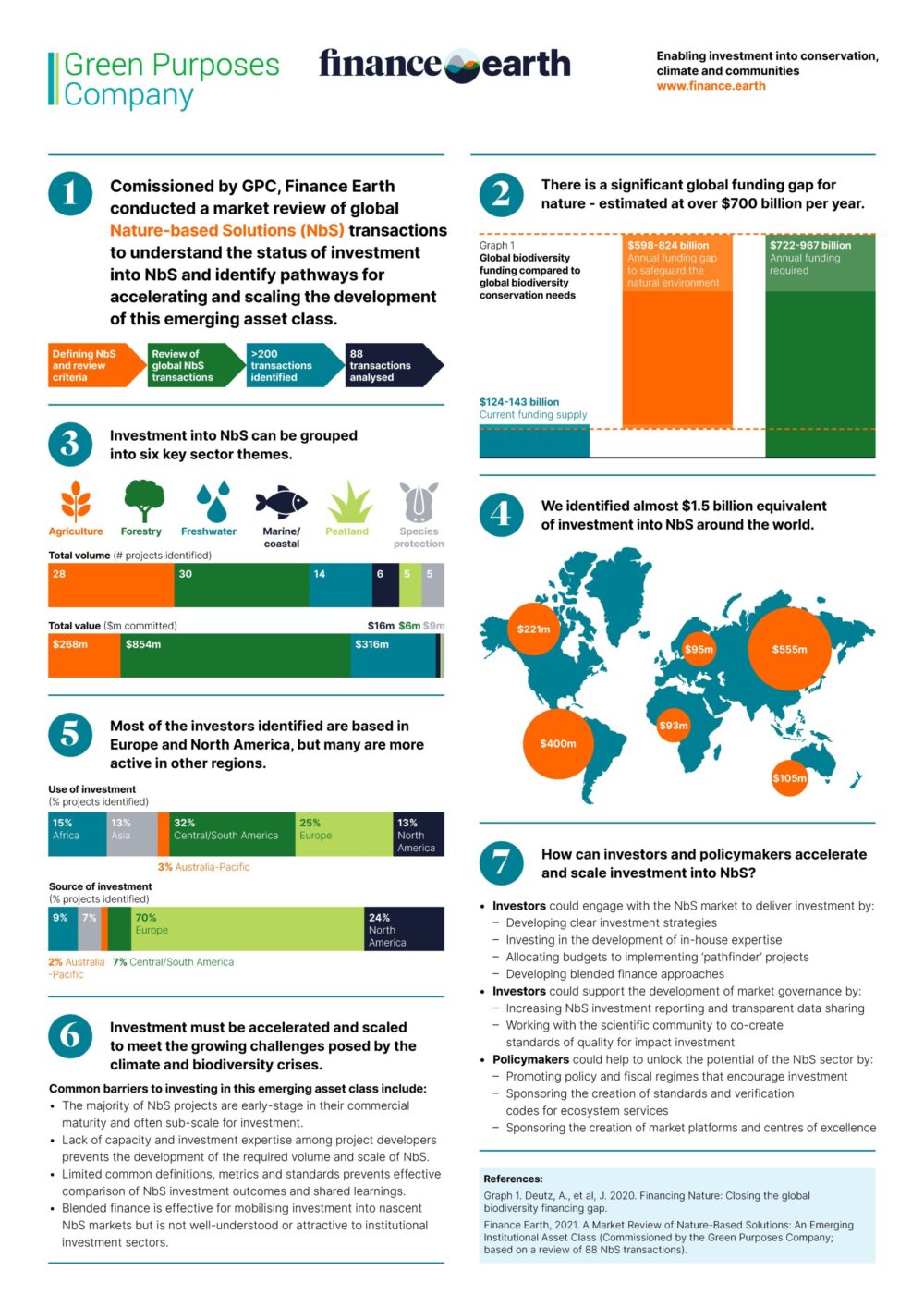Nature Based Solutions (NbS) is an emerging institutional asset class

The Green Purposes Company, in partnership with Finance Earth, has today published a ground-breaking report on the urgent need to accelerate and scale up investment in nature. This report is published at a critical time: we are facing an environmental crisis with global wildlife populations plummeting and the impacts of climate change increasingly being felt around the world.
It is estimated that the global need for biodiversity conservation financing will reach approximately $854 billion annually by 2030 in order to safeguard the natural environment. With current spending only around $130 billion per year, and predominantly provided by public and philanthropic sector organisations, private investment must be dramatically scaled to meet the over $700 billion annual financing gap.
Nature-based solutions (“NbS”) provide a rapidly growing opportunity to monetise and invest in activities to protect, sustainably manage, and restore ecosystems, that address societal challenges while simultaneously providing human well-being and biodiversity benefits.
Today’s report outlines the findings of a global review of investments into NbS to explain market opportunities and identify recommendations for institutional investors seeking to participate and support the development of this emerging asset class.

Trevor Hutchings, Chair of the Trustees of the Green Purposes Company, said:
“Our social and economic wellbeing depends fundamentally on nature. Yet our investment in nature is not at anything like the scale needed to address environmental collapse and to meet net zero. It is seen as a niche area, an immature market, and without the financial returns necessary to attract mainstream investors. This needs to change, and to change now.
However, like low carbon before, and with the right actions by institutional investors and policy makers, we believe that investing in nature will become mainstream – the next global financial asset class.”
James Mansfield, Managing Director of Finance Earth, added:
“This report maps investments in nature taking place around the world. It provides insights on this important market and some of the key barriers to uptake. Encouragingly, the report highlights that change is underway. It identifies a number of exemplar projects, with some serious players entering the market, but the challenge remains how to scale whilst maintaining quality and impact.”
The report makes recommendations for institutional investors and policy makers which include:
- Engaging with the market to deliver investment – investors, developers and others must work together to bring forward a pipeline of investable and scalable projects.
- Developing market governance – there must be robust definitions, metrics, standards and verification to improve market confidence and prevent greenwashing.
- Public sector leadership – governments, business and institutions must step up to ensure a new policy and fiscal landscape rewards investment in nature, now and for the long term.





